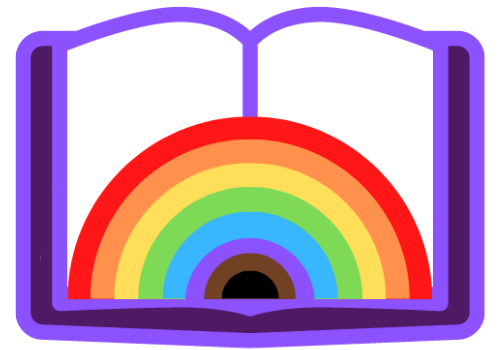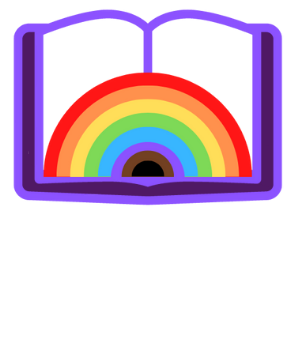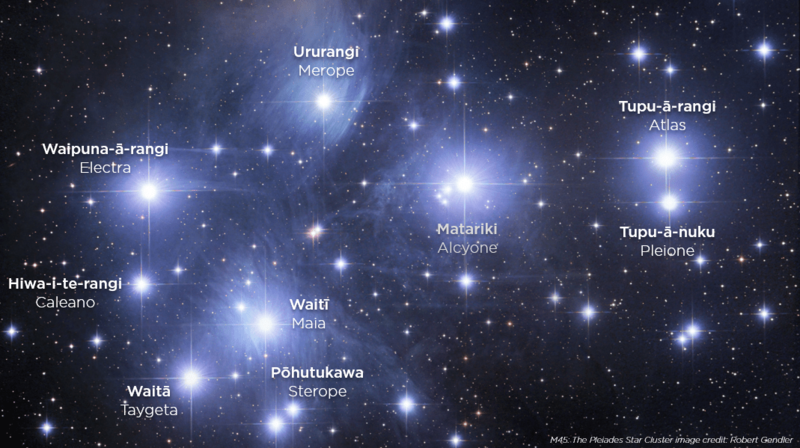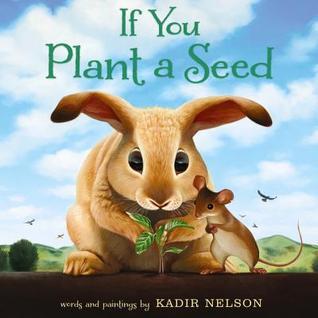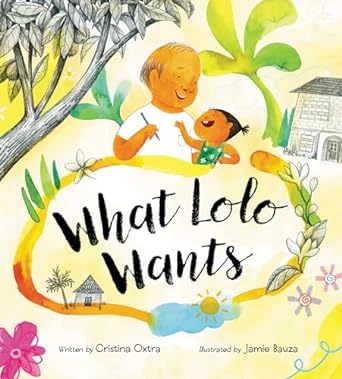by Anne Coppell, Tāmaki Makaurau Auckland, Aotearoa New Zealand
Kia ora.
Matariki is a star cluster that appears in the pre-dawn sky in May or June, marking the start of a new year.
During Matariki, we celebrate our unique place in the world.
We give respect to the land on which we live and admiration to our earth mother Papatuanuku.
Throughout Matariki we learn about those who have come before us and those who have passed on.
We learn about our history, our family lines of descent, and the deeds of our ancestors
Matariki is a sign of growth. It’s a time of change.
It’s a time to prepare, it’s a time of action.
During Matariki, we acknowledge what we have and what we have to give.
Matariki celebrates the diversity of life.
It is a celebration of culture, language, spirit and people.
Matariki is our Aotearoa New Year.
Matariki is a star cluster which appears in the night-sky during mid-Winter. Matariki signals the Māori New Year. It is a time of renewal and celebration.
~ Source: Te Papa Tongarewa The Museum of New Zealand.
This star cluster is visible to the naked eye from most parts of our planet.
Matariki is also known as:
- the Pleiades (Greek)
- Makali’i (Hawaiian)
- Subaru (Japanese)
And a HUGE list of other names from around the world. Seriously! You could spend hours following links on the Wikipedia entry for the Pleiades in folklore and literature.
Why a Matariki storytime?
This year marks the first year Matariki is acknowledged with a public holiday in Aotearoa New Zealand.
What better time, then, than to introduce the wider world to such a special time of year.
Are there local indigenous groups in your area you could work with, to see if they have similar traditions?
Could you advocate for celebrating them at your library?
Books about Matariki:
MATARIKI by Kirsten Parkinson and Kitty Brown; nā Kiringauā Cassidy i whakamāori
How can we celebrate Matariki? Let’s look to the stars! Explore the nine stars of Matariki in rich, detailed imagery and bilingual text. Dive into the meaning of the stars and Matariki itself. Encourage whānau to remember, celebrate and reflect at this important time of year.
Other picture books about Matariki:
- THE STOLEN STARS OF MATARIKI written by Miriama Kamo, illustrated by Zak Waipara.
- LITTLE KIWI’S MATARIKI written and illustrated by Nikki Slade Robinson.
- THE PROMISE OF PUANGA: A STORY FOR MATARIKI written by Kirsty Wadsworth, illustrated by Munro Te Whata.
- THE SEVEN KITES OF MATARIKI written by Calico McClintock, illustrated by Dominique Ford.
Not a picture book, but beyond gorgeous!:
- MATARIKI AROUND THE WORLD written by Rangiānehu Mātāmua and Miriama Kamo, illustrated by Isobel Te Aho-White.
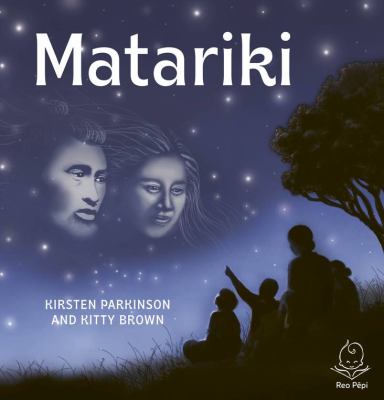
How important is this star cluster?
Did you know, some academics believe that the Pleiades are represented in the ancient Lascaux cave paintings?
That means, they have been important to humanity for over 16,000 years!
Could you invite a local astronomy group in to talk about stars through history? Or navigation?

Books about stars:
TANE AND THE STARS retold by Ron Bacon, illustrated by Manu Smith.
Retells the traditional Māori tale of how Tane, seeing the night sky so dark, made the stars and scattered them across the sky.
Other picture books about stars:
- TWINKLE, TWINKLE MATARIKI written and illustrated by Rebecca Larsen; Māori translation team: Justin Kereama, Tania Solomona, vocals by Paul Inia; music by Richard Larsen.
- ABIGAIL AND THE BIRTH OF THE SUN written by Matthew Cunningham, illustrated by Sarah Wilkins.
- THE STAR FESTIVAL written by Moni Ritchie Hadley, illustrated by Mizuho Fujisawa.
- ADA AND THE GALAXIES written by Alan Lightman and Olga Pastuchiv, illustrated by Susanna Chapman.
- WHEN DAD SHOWED ME THE UNIVERSE written by Ulf Stark, illustrated by Eva Eriksson, translated by Julia Marshall.
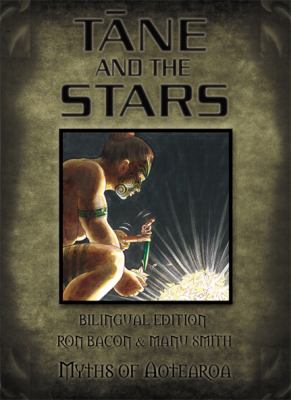
Seven stars? Nine stars? No stars?
If you know your Greek mythology, there are seven stars in the Pleiades.
If you’ve ever studied the Subaru logo, there are six stars.
And, now, I’m saying there are NINE! What’s with that?
Geography.
Stars are different, depending on where you are.
In te ao Māori, different iwi could see different aspects of the sky — hence, some had seven stars, some had nine stars, and some had Puanga — who is not part of the cluster, at all.
You can read more on the Te Papa Tongarewa Museum of Aotearoa New Zealand website.

Books about whānau / family:
THE TREASURE written by Melanie Drewery, illustrated by Bruce Potter.
A mother tells her young son how much she loves him.
Other picture books about whānau:
- NANNY MIHI AND THE RAINBOW written by Melanie Drewery, illustrated by Tracy Duncan
Any book you love with family as the theme works! Whānau is not just your immediate / nuclear family. It is all your aunties and uncles and grandparents and cousins, and the family by choice. It is your support and caring network.
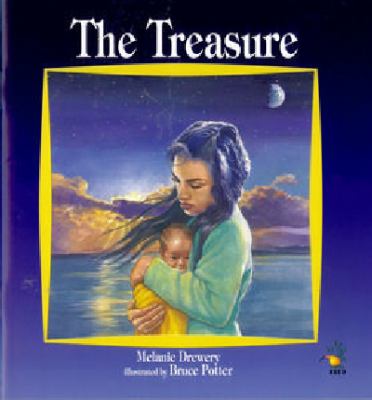
Introducing: Mary Poppins!
Yes, Mary Poppins. In the first book, MARY POPPINS, in the chapter ‘Christmas Shopping’ Mary, Jane, and Michael meet a child at the shops. The interaction goes for a number of pages, but, here’s a taster, after the child asks Mary Poppins if she knows her name:
“Does it — does it,” she whispered, “begin with an M?”
The child hopped on one leg delightedly.
“Of course it does — and you know it. M-A-I-A. I’m Maia.” She turned to Jane and Michael.
“Now you recognise me, don’t you? I’m the second of the Pleiades. Electra — she’s the eldest — couldn’t come because she’s minding Merope. Merope’s the baby, and the other five of us come in between — all girls. Our Mother was very disappointed at first not to have a boy, but now she doesn’t mind.”
You can read the whole chapter on this ESL site.

Books about gardening and food:
DANIEL’S MATARIKI FEAST written by Rebecca Beyer and Linley Wellington, illustrated by Christine Ross.
Daniel is nervous on his first day at school but through the class activities that mark the Matariki Festival he learns that it is a time of sharing and beginning new friendships. He learns the true importance of Māori New Year.
Other picture books about growing and food:
- PLANT A KISS written by Amy Krouse Rosenthal, illustrated by Peter H. Reynolds.
- FLORA’S FLOWERS written and illustrated by Debi Gliori.
- PLANTING A RAINBOW written and illustrated by Lois Ehlert.
Any book you love with family as the theme works! Whānau is not just your immediate / nuclear family. It is all your aunties and uncles and grandparents and cousins, and the family by choice. It is your support and caring network.

The Matariki Macarena!
Waitī
Waita
Waipuna-ā-rangi
Tupuānuku
Tupuārangi
Ururangi
Pōhutakawa
Hiwa-i-te-rangi
E Matariki
- Activities from Te Papa Tongarewa Museum of New Zealand.
- Activities from Ngā Kete Wānanga-o-Ōtautahi Christchurch City Libraries.
- Te Iwa o Matariki from Te Wānanga o Aotearoa.
- Matariki and Māori Astronomy with Dr Rangi Matamua presentation and text.
